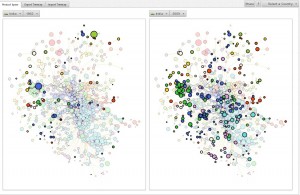From an article that appeared in the New York Times on Thursday:
“When the American government, a generous and close friend to Uganda, began an organic-farming program to help rural economies here, Mr. Acope expanded, selling a wide variety of commodities at good rates.
His one acre became seven. Mr. Acope fathered 11 children. Uganda was developing, and Mr. Acope was one of many who were riding high, he said.
But the very next year came winds of change. Faced with unrelenting malaria, which threatened both lives and livelihoods, Uganda’s government teamed up with the United States to use chemical insecticide sprays — including DDT — to try to eliminate the disease. Mr. Acope’s home district, Apac, which has some of the highest malaria rates in the world was chosen for spraying in early 2008.”
Let me be completely honest here: This type of lazily-thought-through sob story is the very reason why, at the end of my tenure as editor of the student newspaper of the Université de Montréal in 1998, I decided to get as far away from journalism as I possibly could to go to graduate school in economics instead.

On DDT Spraying, Organic Farming, and Lazy Thinking
From an article that appeared in the New York Times on Thursday:
“When the American government, a generous and close friend to Uganda, began an organic-farming program to help rural economies here, Mr. Acope expanded, selling a wide variety of commodities at good rates.
His one acre became seven. Mr. Acope fathered 11 children. Uganda was developing, and Mr. Acope was one of many who were riding high, he said.
But the very next year came winds of change. Faced with unrelenting malaria, which threatened both lives and livelihoods, Uganda’s government teamed up with the United States to use chemical insecticide sprays — including DDT — to try to eliminate the disease. Mr. Acope’s home district, Apac, which has some of the highest malaria rates in the world was chosen for spraying in early 2008.”
Let me be completely honest here: This type of lazily-thought-through sob story is the very reason why, at the end of my tenure as editor of the student newspaper of the Université de Montréal in 1998, I decided to get as far away from journalism as I possibly could to go to graduate school in economics instead.